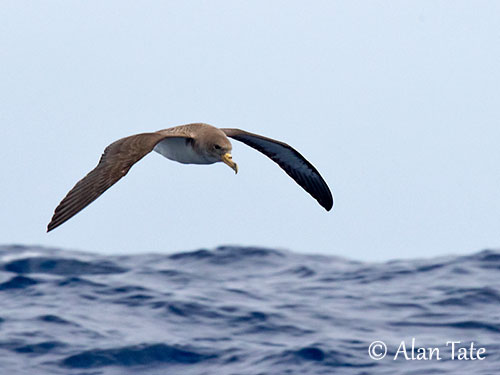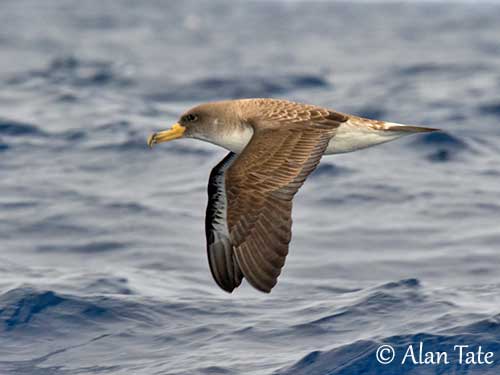
Fr: Puffin boréal
Ang: Cory’s Shearwater
All: Corysturmtaucher
Esp: Pardela cenicienta canaria
Ita: Berta maggiore atlantica
Nd: Kuhls Pijlstormvogel
Sd: gulnäbbad lira
Photographers:
Alan & Ann Tate
AA Bird Photography
Text by Nicole Bouglouan
Sources:
HANDBOOK OF THE BIRDS OF THE WORLD vol 1 by Josep del Hoyo-Andrew Elliot-Jordi Sargatal - Lynx Edicions - ISBN: 8487334105
Wikipedia, the free encyclopaedia
New Zealand Birds Online
What Bird-The ultimate Bird Guide (Mitchell Waite)
Terra Azul - A tough life among waves: The Cory’s shearwater life cycle
Page family Procellariidae
Summary cards
Cory’s Shearwater
Calonectris borealis
Procellariiformes Order – Procellariidae Family
INTRODUCTION:
The Cory’s Shearwater and the Scopoli’s Shearwater are now split into two distinct species. The Cory’s Shearwater is larger with a stouter bill. The underwing pattern is a good help to distinguish them.
This species is found in E Atlantic, and breeds on several islands including Madeira, Azores, Berlengas Archipelago and Canary Islands. It is migratory and winters off E coasts of both North and South America, and in SW Indian Ocean off South Africa.
The Cory’s Shearwater typically feeds on aquatic prey, but it also takes offal while following fishing boats. It is gregarious and breeds in colonies, but competition for nesting burrows is usually intense.
The Cory’s Shearwater is widespread and can be locally abundant, but the young are threatened by introduced predators, poachers and urban lights.
But the species is not globally threatened for the moment.

DESCRIPTION OF THE BIRD:
Biometrics:
Length: 48-56 cm
Wingspan: 113-124 cm
Weight: 605-1060 g
The Cory’s Shearwater has greyish-brown upperparts, neck sides and head. The underparts are white, but the underwing shows dark leading and trailing edges, and a broad, very dark wingtip. On the tail, the rectrices are blackish.
On the head, neck sides and face to below the eye are greyish-brown.
The bill is horn-yellow to yellowish with dark, hooked tip. The eyes are dark brown. Legs and webbed feet are dark pink.
Male and female are similar, but the female is slightly smaller than male.
The juvenile resembles adult but it is greyer.
RANGE:
The Cory’s Shearwater breeds on islands off NW Spain (Galicia), Berlengas Archipelago off WC Portugal, W to Azores and S to Canary Islands.
It is migratory and moves widely through the Atlantic Ocean outside breeding season. However, it winters mainly in the upwelling systems of both Benguela and Agulhas Currents around South Africa.
The non-breeding birds occur in the South Atlantic Ocean between November and May, usually offshore from Brazil, Uruguay and Argentina, but also off the coasts of South Africa, and occasionally northwards as far as Amsterdam and St Paul Islands.
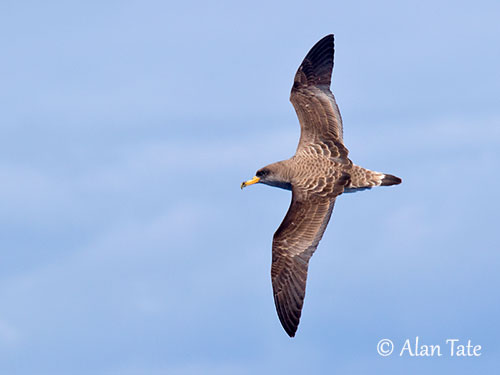
HABITAT:
The Cory’s Shearwater occurs in open ocean, but it prefers relatively warm waters. It can be found over the continental shelf too.
It comes to land for breeding and nests on rocky or mountainous islands.
CALLS AND SONGS: SOUNDS BY XENO-CANTO
The Cory’s Shearwater is usually fairly silent at sea, whereas at night, it gives raucous cackling calls at the breeding colonies. It is vocal both in flight and on the ground, but it also calls from within the nesting burrow, uttering howling, gurgling calls. While foraging at sea, it may give nasal, bleating calls.
BEHAVIOUR IN THE WILD:
The Cory’s Shearwater feeds primarily on fish, squid and crustaceans. Fish diet includes herring and sand lance. Crustaceans usually include crabs and some other species. Squid is taken at times and may become the main food during a period.
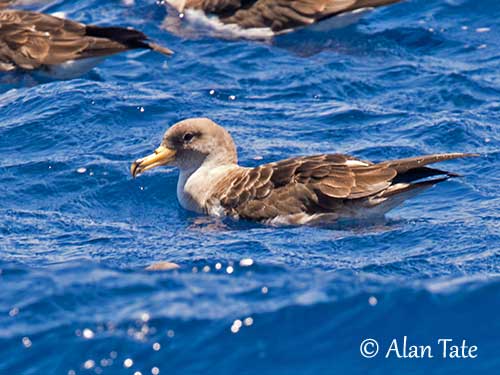
It plunges into the water from just above the surface, but it also catches items while swimming. It often feeds at night and also forages near whales and large predatory fish that drive small prey to the surface. It follows the fishing boats from which it receives offal.
The Cory’s Shearwater comes to land for breeding. During courtship, both mates sit close to each other on the ground, nibbling at each other’s head and bill. They nest in colonies and the single egg is laid in a burrow, but also on the ground, depending on site availability.
It is migratory and can be seen off South Africa and on the E coast of both North and South America.
The flight is strong and powerful, with rapid, stiff wingbeats interspersed with short glides. It can be seen soaring high above the sea. However, compared to other shearwaters, its flight is relatively slow and languid.
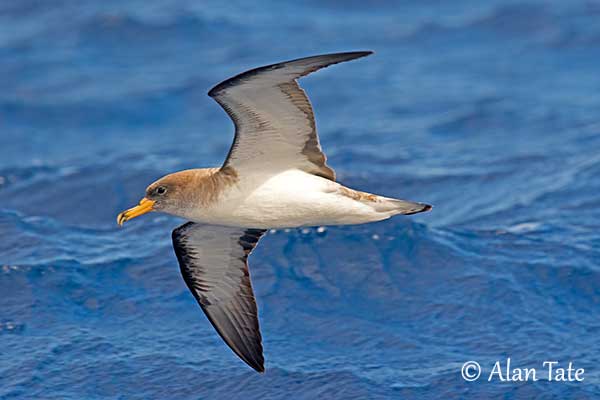
REPRODUCTION OF THIS SPECIES:
The breeding season takes place mainly from March to October.
The Cory’s Shearwater breeds on rocky or mountainous islands where the colonies are established. The nest is usually in burrow of 50/100 centimetres long, but it also uses rock crevices, natural hollows or cracks, or even nests on the ground under thick vegetation. The type of the nest depends on site availability.
The nest is only a pile of pebbles or shells, with or without addition of nesting material.
Following a pre-laying exodus of 18-20 days, the female lays a single white egg. Both adults share the incubation during 52-56 days. The chick is fed by its parents and usually at night. It has brown down and pale yellow bill.
The nesting period may last about three months. Sometimes, the young goes to sea on its own.
The young birds are threatened by the Yellow-legged Gull that also takes the eggs.
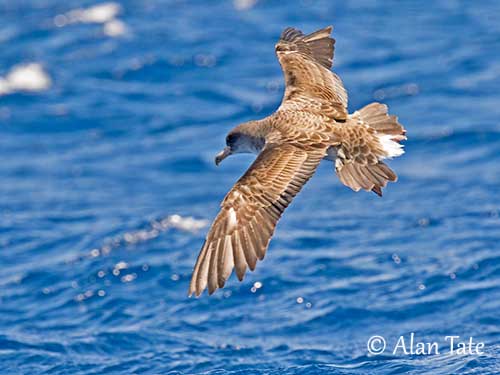
PROTECTION / THREATS / STATUS:
The Cory’s Shearwater is widespread and locally abundant. The young birds are vulnerable to introduced predators, poachers and urban lights, the latter disturbing the route to the sea and the young often falls to the ground. The adults are also vulnerable to bycatch throughout the wide range.
The European population was estimated to number 504,000/507,000 mature individuals in 2015. The trend of the population usually varies through the range, with both declines and increases depending on the location.
But the Cory’s Shearwater is not globally threatened and the species is currently evaluated as Least Concern.
